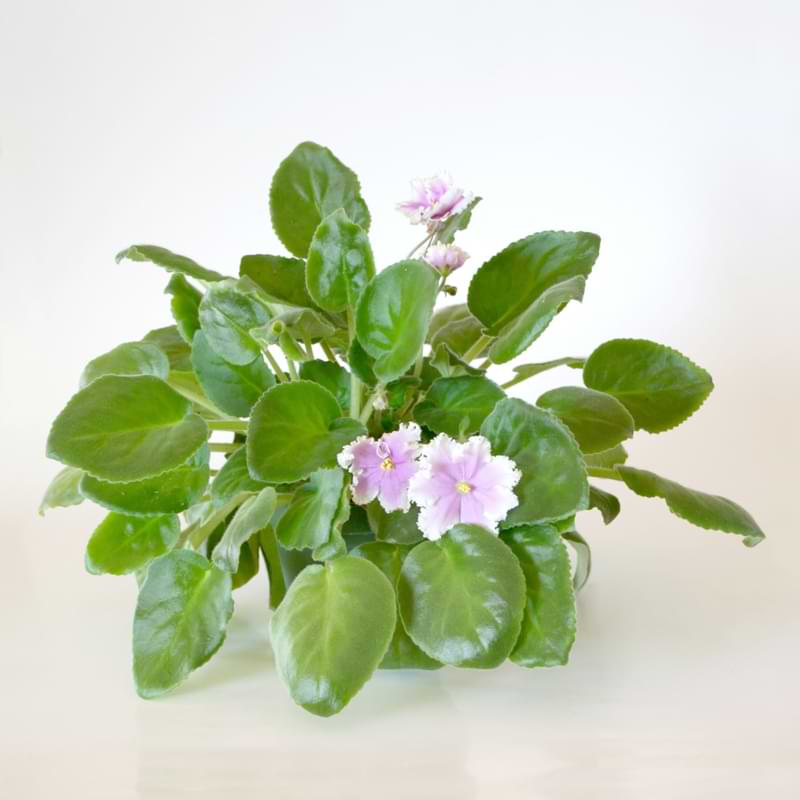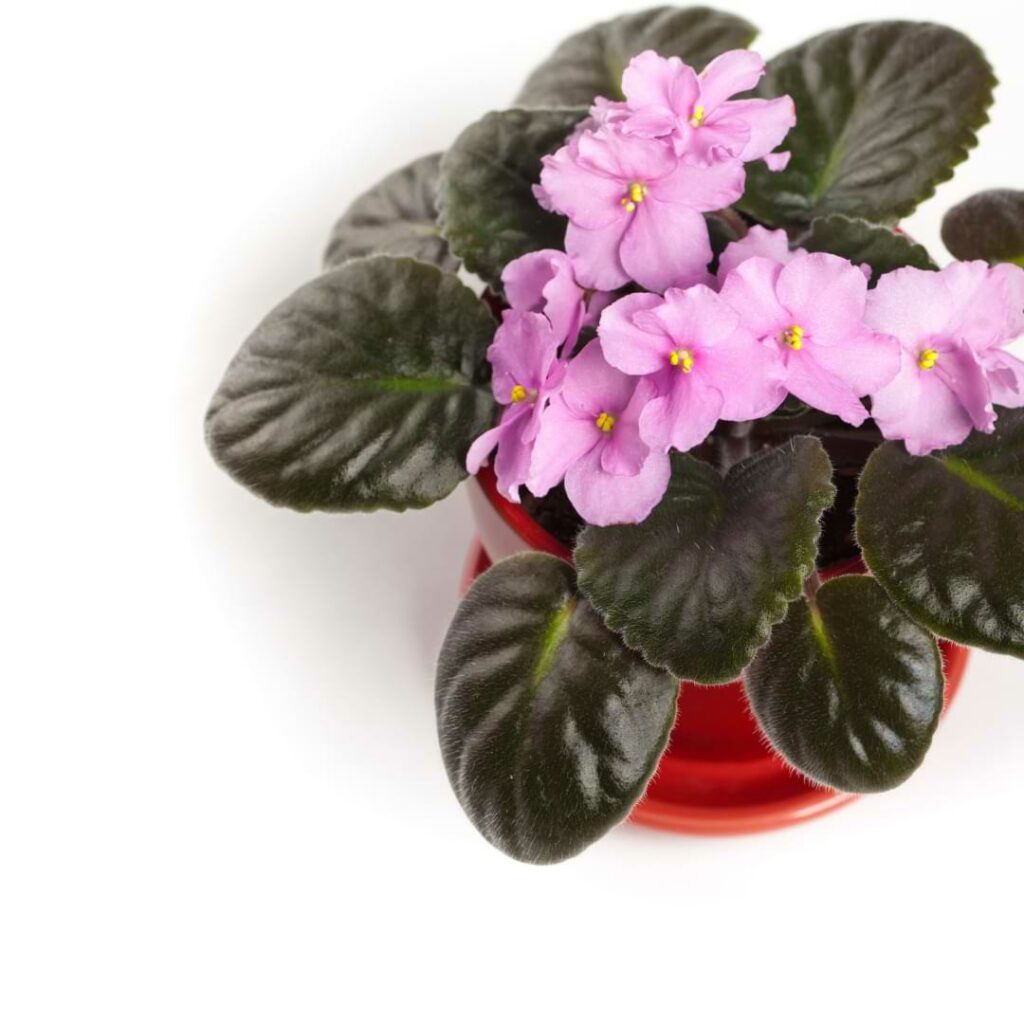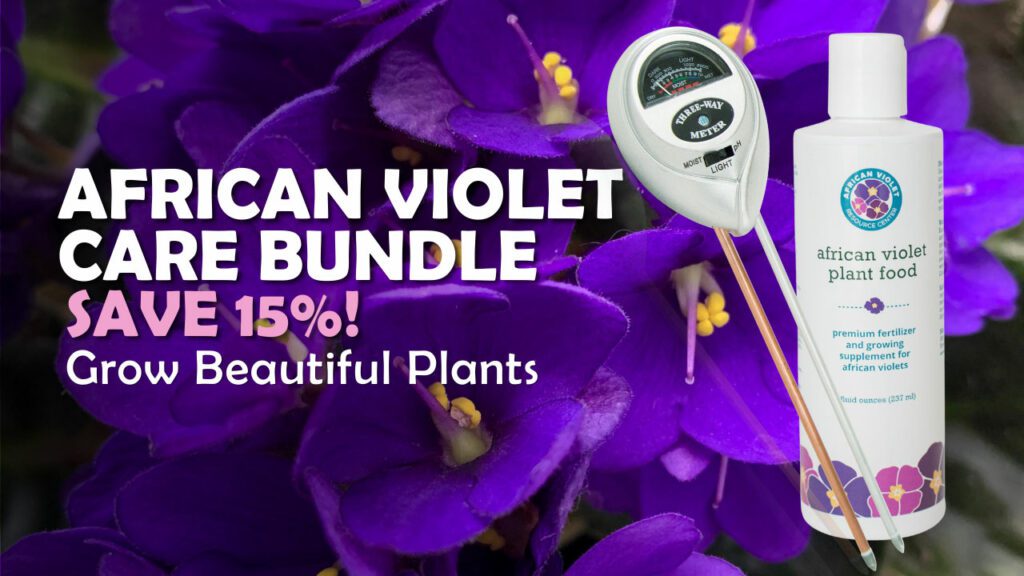Is your beloved African violet looking a little droopy and sad? Don’t fret! It’s not uncommon for these beautiful houseplants to occasionally experience wilting. There can be several reasons behind this phenomenon, ranging from watering issues to pest infestations, so let’s explore some of the most common reasons, and what you can do to fix it!
Causes of Wilting African Violets
Something has caused your beautiful African Violet to begin wilting, and with so many possible causes, it can be difficult to pinpoint exactly why it’s happened. From watering problems to pests, let’s get to the bottom of this so you can keep enjoying your beautiful African Violet.
Watering Issues
Improper watering practices can often lead to wilting, and luckily, it’s one of the easiest causes to fix! Both underwatering and overwatering could cause your African Violet to wilt, so a surefire way to figure out if this is the cause behind your plant’s wilting is to dig into the soil.
Using your finger or an indoor plant rake, gently remove the top layer of soil until you can see some of the roots. Make sure no direct light gets to the roots while you’re doing this. If the soil is bone-dry, underwatering is likely the reason behind your plant’s droopiness. If the soil is soggy, overwatering is likely the culprit. If the soil seems relatively moist, but definitely not over-soggy, then watering may not be the issue at all.
Improper Light
Proper lighting is crucial for the health and vitality of African violets. These delicate plants thrive in bright, indirect light, making them perfect candidates for indoor gardening. In order to bloom, African violets need around 10 hours of dark every night, as well. So if you know your African violet is receiving too much or too little light, it is likely the problem behind your plant’s wilting leaves or blooms.
Temperature Irregularities
African violets are delicate plants that thrive in moderate temperatures, so when the temperature around them changes quickly, it can cause them to wilt and suffer. Extreme heat or cold can be detrimental to their health, leading to drooping leaves and wilted appearance. To prevent temperature irregularities from affecting your African violets, keep them in a stable environment with consistent temperatures between 65° and 80°F.
Fertilizing Issues
Proper fertilization is crucial to keep your African violet happy and healthy. When an African violet doesn’t get enough nutrients from fertilizers, it will mostly just cause the plant to grow slowly and it may have trouble producing those beautiful blooms. When an African violet gets too much fertilizer, it could be detrimental to the plant, and the first sign of this is drooping leaves, along with yellowing of the leaves and stems.
Pests and Diseases
Pests and diseases can take a toll on your African violets, causing them to wilt and lose their luster. These little intruders can range from tiny mites to pesky aphids, all of which can wreak havoc on your precious plants.
You’ll want to look out for:
- Spider mites
- Aphids
- Fungus gnats
- Mealybugs
Of course, there are more pests that could harm your plant, but these are the most common. If you suspect a pest infestation, carefully inspect every leaf on both sides, and each stem. You’ll notice them if you look close enough.
Diseases like powdery mildew and root rot can also lead to wilting. Powdery mildew appears as a white or grayish powder on the leaves, while root rot causes the roots to become mushy and discolored. Other diseases to look out for are: fungal leaf spot, bacterial leaf spot, and blight.
Wilting After Re-potting
Re-potting your African violet can be a stressful experience for the plant, and it’s not uncommon to see wilting occur as a result. When you disturb the roots during repotting, it can temporarily disrupt their ability to absorb water and nutrients effectively.
One possible reason for wilting after repotting is that the plant may have suffered root damage during the process. This can happen if you were too rough while removing the plant from its old pot or if you accidentally tore some of the roots. It could also be that the plant didn’t get appropriate moisture and humidity levels immediately after repotting. If the soil becomes too dry or lacks moisture, it can further stress out your African violet.

How to Fix Wilted African Violets
While it may seem overwhelming when figuring out what is causing your African violet’s leaves to wilt and droop, the good news is that you can easily fix any of these problems once you’ve identified which is the cause behind your plant’s sad leaves.
Underwatering
To fix an under watered African violet, gently water the plant until the soil feels moist but not saturated. It’s important to remember that these plants prefer bottom watering rather than overhead watering, as excess moisture on their leaves can lead to leaf spots or rot. Using a moisture meter could help take the guesswork out of this for you!
Overwatering
To fix an overwatered African violet, you’ll need to adjust your watering routine. Start by allowing the top inch of soil to dry out before watering again. Be sure not to let the plant sit in standing water for extended periods of time as this can exacerbate the problem.
In addition to adjusting your watering schedule, consider improving drainage by repotting your African violet in a well-draining potting mix. This will help prevent excess moisture from accumulating around the roots.
If your plant is showing significant signs of root rot, you’ll want to go even further to remedy this problem. Remove rotted roots and repot the plant using brand new African violet soil, letting the roots recover for a couple of days before watering the plant again. Then, use a root supplement to help your plant recover even faster. Your African violet will be more susceptible to overwatering for a couple of weeks after this, so be very careful when watering it!
Excess Sunlight
If your African violet is getting too much light, consider moving it to a location with filtered or diffused light. A sheer curtain or placing it away from windows during peak sun hours will help protect it from excessive sunlight. Remember, finding the right balance of light for your African violet is crucial for its overall health and well-being. So, make sure you monitor its exposure regularly and adjust accordingly.
Lack of Sunlight
If your plant is not getting enough sunlight, you’ll need to provide your African violet with more exposure to natural light. Place them near a windowsill that receives bright but filtered light throughout the day. If your home doesn’t offer sufficient natural light, consider using artificial grow lights specifically designed for indoor plants.
Remember not to expose your African violet directly to harsh afternoon sun as it could scorch its delicate foliage. Finding the right balance is key – enough sunlight without excessive heat or intensity!
Extreme Heat
To prevent wilting due to extreme heat, it is crucial to provide adequate shade and protection from direct sunlight during the hottest parts of the day. Placing your African violet away from windows or using sheer curtains can help filter out some of the harsh rays.
Another strategy is to keep them in a room with air conditioning or use fans strategically placed around them when temperatures soar. This will help regulate the temperature and reduce moisture loss through evaporation.
Cool Temperatures
If colder temperatures are the likely cause behind your African violet’s wilting, try moving your plant to a warmer location in your home or provide some supplemental heat if necessary. Avoid placing it near drafty windows or doors that might expose it to cooler temperatures. Be mindful of air vents, too, as a cold draft from those can easily stress out your African violet enough for it to show these signs.
Overfertilized
When you over fertilize, salts build up in the soil, altering its pH balance. This can prevent your African violet from absorbing water properly, causing it to wilt. Additionally, excessive nitrogen in the fertilizer can promote lush foliage growth at the expense of root development.
To fix an overfertilized African violet, start by flushing out the excess salts from the soil. Water thoroughly until water drains freely from the pot’s drainage holes. Then, allow your plant some time without additional fertilization. This will give it a chance to recover and regain its natural balance.
Incorporate proper fertilizing practices moving forward by carefully following instructions on your chosen fertilizer package. You can also opt for an African violet food that you can feed to your plant with each watering, allowing your plant to absorb a smaller amount of nutrients more frequently and efficiently.
Pests
To combat pests, it’s important to regularly inspect your plants for any signs of infestation. If you spot any pests, there are several methods you can use to control them naturally including spraying with insecticidal soap, neem oil, or using predatory insects like ladybugs.
Some pest infestations can be controlled by wiping away the pests with some rubbing alcohol on the end of a q-tip, but others will require more intensive methods. Keeping a close eye on your plant will prevent a huge pest infestation, and will allow you to take care of pests quickly as soon as they are noticed.
Diseases
Preventing diseases is the best way to beat diseases, and that involves maintaining good hygiene practices such as avoiding overhead watering, providing adequate air circulation around the plants, removing infected leaves promptly, and using sterile potting mixtures.
If your African violet shows signs of disease-related wilting despite preventative measures being taken, it may be necessary to use appropriate fungicides or bactericides specifically formulated for these types of infections. You can try to treat the disease with natural remedies, but fungicides and bactericides are made to help your plant get through and fight off the disease quickly.
Care After Re-potting
To prevent wilting after repotting your African violet, it’s important to provide the proper care for it. After all, these delicate plants can be sensitive to changes in their environment. Here are some tips on how to care for your African violets after repotting:
- Watering: After repotting, it’s crucial to adjust your watering routine accordingly. Keep the soil slightly moist but not soggy, and avoid overwatering as this can lead to root rot. If repotting because of root rot, hold off on watering your plant for a couple of days after repotting.
- Light: Place your newly potted African violets in a location with bright, indirect light. Avoid direct sunlight which can scorch the leaves or cause wilting.
- Temperature: Maintain a temperature between 65-80°F. Avoid exposing them to extreme heat or cold drafts as they may wilt or suffer from stress.
- Fertilizing: Wait at least two weeks before fertilizing newly repotted African violets. Then use a balanced fertilizer specifically formulated for these plants and follow the instructions carefully.
If your African violet still shows signs of transplant shock after you’ve taken the steps to ensure it’s successful repotting, you may just need to give it some extra time to adjust. Some plants will recover from this on their own, and others may not. As long as you care for your plant properly, it should have no problem recovering from being repotted, as long as there aren’t other issues under the surface.
Droopy and wilting leaves are no fun to look at, and could be a sign of something serious going on with your plant. So put on your detective hat and figure out what is causing your African violet to wilt so you can fix it, and get back to enjoying your beautiful plant!







